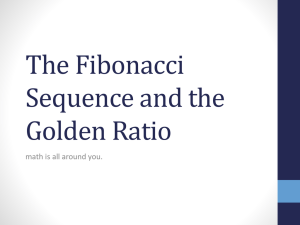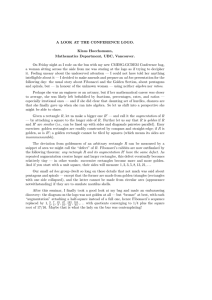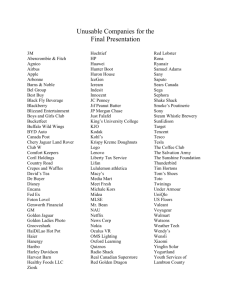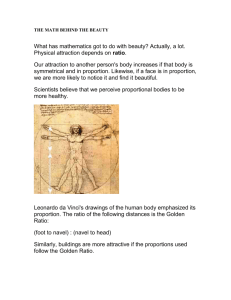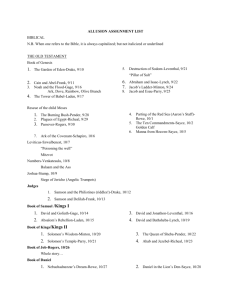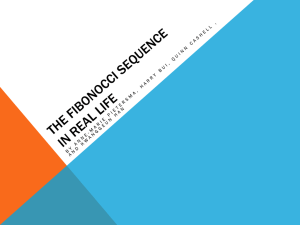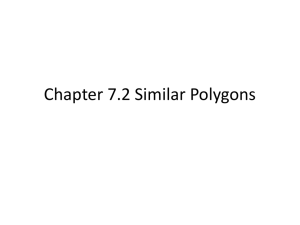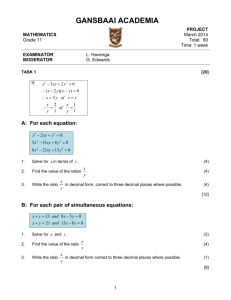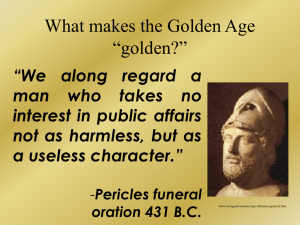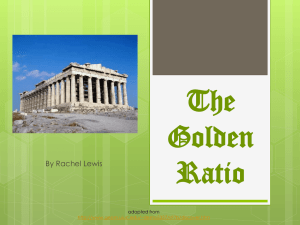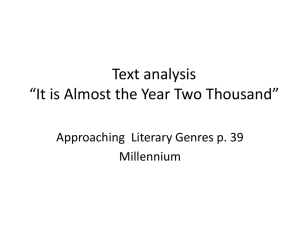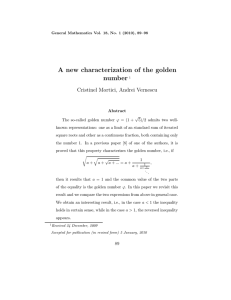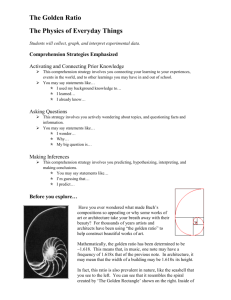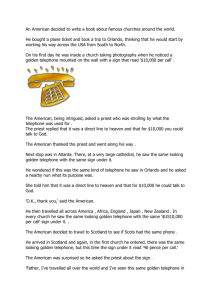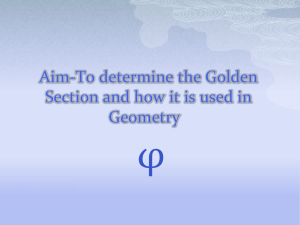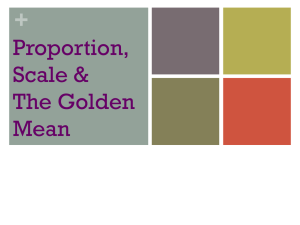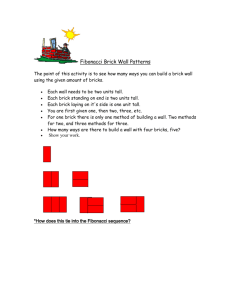Golden Ratio
advertisement
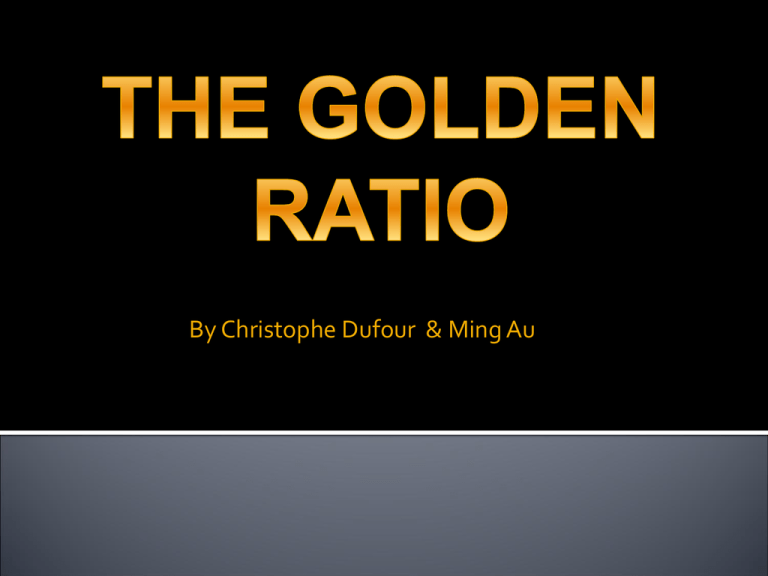
By Christophe Dufour & Ming Au Finding φ. The property that defines the golden ratio is: L = L+1 1 L a. Cross multiplying and rearranging the equation we obtain the following quadratic equation : L^2 - L -1 = 0 b. Using the quadratic formula to solve the quadratic equation in (a). The “positive” root is called the Golden Ratio: 1 +√[( 1 – 4(1)(-1)] = 2 1 +√(1 + 4) = 2 1 + √5 2 φ2 = 1 + √5 x 1 + √5 ~ 2.618 = φ + 1 2 2 1/φ = 2___ ~ 00.618 = φ - 1 1+ √5 Formation of the Golden Rectangle A Golden Rectangle is formed by a regular rectangle that is cut into half's. One of the half is then cut into another half. One of the quarter equals 1 by ½. The rest of the figure equals √5/2. The Length of the figure then equals φ. 1 + √5 ~ 1.618 x 1 = 1.618 = φ 2 The Golden Ratio in Art The Golden Ratio can be seen in the physical structure of the human face in great paintings such as the Mona Lisa or The sacrament of the Last Supper; the artist needed a constant which applied to the Golden Ratio to the drawing. A Logarithmic Spiral A special curve that appears in nature in the formation of shells. It is formed by connecting the corners of the squares of a golden rectangle with a smooth curve. The Fibonacci Sequence: 1, 1, 2, 3, 5, 8, 13, 21, 34, … A number in the sequence is obtained by adding the two previous numbers before it: For example, 1+1=2, 1+2=3, 2+3=5, 3+5=8, …. What is the connection between the Fibonacci F2/F1 1/1 = Sequence and the Golden Ratio? F3/F2 2/1 = The ratios of the numbers in the F4/F3 3/2 = Fibonacci sequence tend F5/F4 5/3 = toward the Golden Ratio φ. 1 2 1.5 1.667 F6/F5 8/5 = 1.6 F7/F6 13/8 = 1.62
